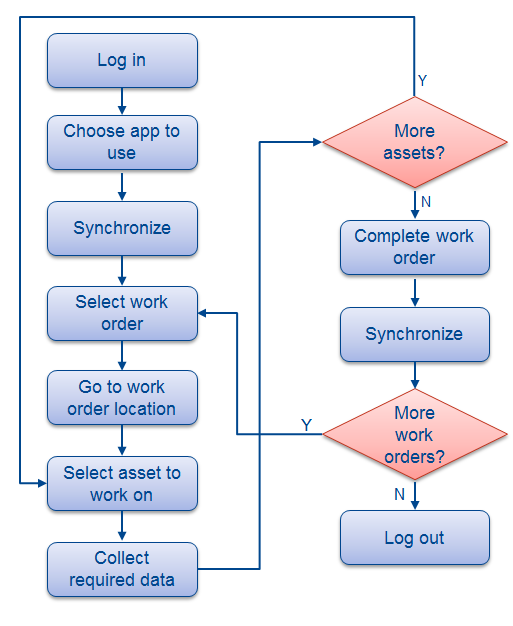Progressing a work order in the field
One of the central concepts of Trimble Unity is that of workflow and the associated work order statuses. Workflow represents the lifecycle of a work order from creation to closure.
Workflow typically varies from app to app but generally has a similar flow.
In fact, the current status of a work order is represented by a combination of the work order status, and the percentage of the assets associated with that work order for which the required operation has been completed.
The following diagram shows how a work order is progressed by a field crew.

The description of the steps is as follows:
Step 1: Log in
Log into the Trimble Unity app.
Step 2: Choose application
Choose the app you want to use.
Step 3: Sync to mobile device
The field crew syncs to Trimble Unity on the cloud to get the latest network data, maps, and work orders assigned to them.
Step 4: Select work order to work on
The field crew selects the work order to work on—this may be based on proximity to the current location (the list can be sorted by proximity), priority, or the projected start date if the work needs to be started on a scheduled date.
Step 5: Go to work order location
The field crew uses the map and turn-by-turn navigation steps to get to the work order location.
Step 6: Select asset to work on
Where there are multiple assets, the field crew can choose which asset to work on; again this will probably be based on proximity to the current location.
Step 7: Collect data/work on asset
The field crew works through the form to capture the required data for the asset.
Step 8: Complete the work order
If data collection is complete for all assets, then the work order can be completed.
Step 9: Sync completed work order to cloud
To ensure the data in the forms and the work order is uploaded to the Trimble Unity in the cloud, the field crew needs to sync again.
These steps are covered in more detail in the next section.